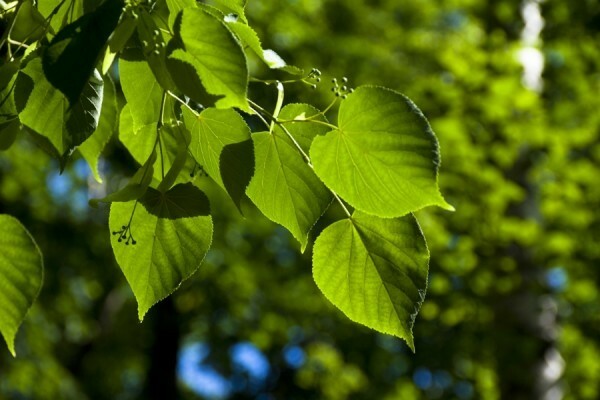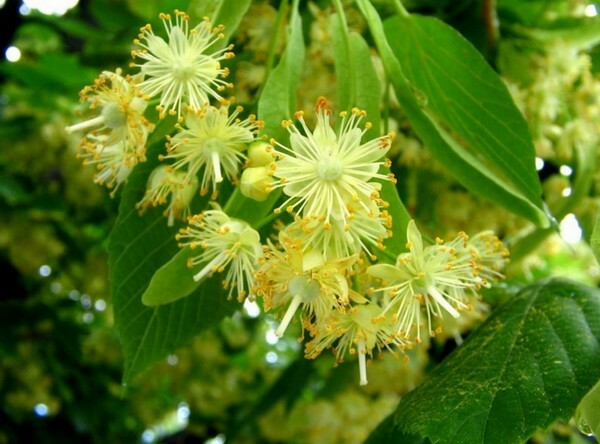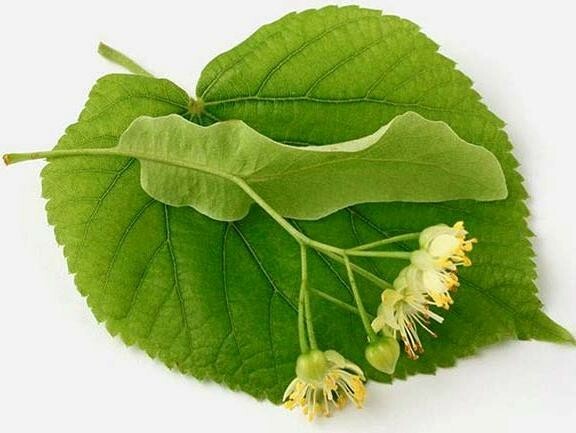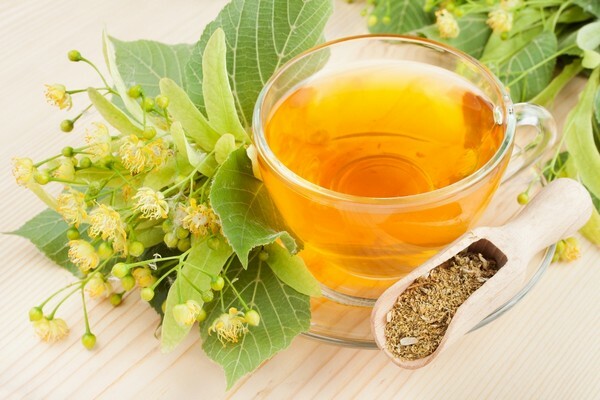- Botanical Description
- Chemical Composition and Therapeutic Properties
- Application in Cooking
- Ways of Application for Medical Purposes
- Precautions
Woody plant Lime is widespread throughout Europe, it can be found in the Urals, in Western Siberia, in the Caucasus. Inflorescences of lime or lime blossom, which have a pleasant aroma, have long been used in folk and traditional medicine for colds, acute respiratory infections, rheumatism, gout, inflammatory processes in the genitourinary system, gastrointestinal diseases. They have a blood-purifying, analgesic, sedative, diuretic, antipyretic, expectorant action. However, not only the flowers of limes are useful for humans. Seeds, fruits, bark and leaves also found application. From the seeds an oil is obtained that resembles almond and olive in properties. Shred fruits are used externally to stop bleeding, and mucus from the young bark - for lotions for joints and skin lesions. Of particular value are the leaves of linden, which, in addition to medicinal value, are still edible and are used in cooking for the preparation of various dishes.

Botanical description
Common linden belongs to deciduous trees, grows in parks, squares, forest plantations and plantings near roads, shade-tolerant and cold-resistant, grows well near oaks and coniferous trees. It propagates vegetatively with layers and stump. Probably and reproduction by seeds. The average life of the plant is 300-400 years.
The root system is well developed. The root penetrates deep into the soil, and provides a high wind resistance to the tree.
Interesting: Lime cleans the air of dust, saturates it with essential oils and disinfects. For a year of life, it absorbs about 16 kg of carbon dioxide. Walking near these trees improves mood and well-being, increases vitality.
The tree trunk reaches a maximum height of 25 to 30 m approximately to the age of 150 years, the crown is wide spreading. The diameter of the trunk of adult trees is about 2 m. The bark is brown in color, young trees have a smooth, later on the upper layer there are grooved cracks. Young branches are smooth, have a reddish-brown color.
The leaves of the linden blossom later than most other trees, sometime in late May - early June. They have long petioles with felt pubescence. Layout the next. The leaf plate is simple heart-shaped with a sharp apex and well-defined veins, a length of 5 to 10 cm. The edges of the leaves are finely pilose. The upper side of the leaf is green without pubescence, the lower one is slightly bluish with yellowish-brown hairs along the veins.

Lime blooms in July, flowering period lasts 2 - 3 weeks. Pollinated by insects, mostly bees. Flowers yellowish-white color, have a characteristic pleasant aroma. Flowers of small size up to 1 cm in diameter, 3 to 15 of them are collected in corymbose inflorescences with yellowish-greenish bracts of elongated lanceolate form 6 cm long, which half fuses with the peduncle. The calyx of the flower is five-leaved, a corolla of five petals.
Fruits ripen in September, but fall off trees only in winter with whole apples that are carried by the wind. They are single-seeded globular nuts of brown color with a diameter of 4 - 8 mm with a leathery shell covered with felt hairs. Seeds broadly ovoid in size 4 - 5 mm with a red-brown shiny surface.
Chemical composition and therapeutic properties of
Lime leaves contain the following useful compounds:
- ascorbic acid;
- carotenoids;
- protein;
- polysaccharides;
- phytoncides.
Presence of phytoncides that suppress the growth and development of pathogenic bacterial and fungal flora allows using them as an antiseptic, and vitamin C for the treatment of scurvy. A large amount of protein and polysaccharides determines the nutritional value of linden leaves.

Mucous decoctions of linden leaves help with diathesis, compresses and lotions - relieve pain and relieve inflammation in diseases of the joints. Compresses from fresh linden leaves, collected together with the kidneys, are very effective for headache, various inflammations, mastitis, stagnation of breast milk and burns. Powder from dry leaves is applied externally for abscesses and abscesses on the skin.
Tea from linden leaves has medicinal properties, has a beneficial effect on the nervous system, helps with heart failure and atherosclerosis, protects against hypoxia. The broth promotes the dissolution of stones in the urinary system.
Lime branches are included in the composition of brooms for baths, after visiting such a bath improves the skin condition and overall well-being of a person.
Water infusion of leaves and flowers of linden can be used for cosmetic purposes to treat oily skin of the face, as well as add to the bath before going to bed to relieve tension and excitement, improve sleep.
Interestingly: In ancient times, fresh leaves of lime and juice from them in the form of compresses were used to heal snake bites.
Application in cooking
Fresh lime leaves are used to prepare various dishes. They are added to salads, first courses, do cabbage rolls and rolls with cottage cheese and herbs, vitamin drinks. Dried chopped leaves can be added to the dough.
Vitamin salad
Fresh young leaves of lime( 50 g), washed, finely chopped, add green onions, dill and cut dandelion leaves( 30 g).Salt, if desired, fill with sour cream or any vegetable oil( olive, sunflower, corn).Salad from the leaves of lime and cucumber
Wash the young leaves of lime( 2 cups), dill, parsley, green onions and two cucumbers. Cucumber cut into strips, lime leaves and greens finely cut with a knife. Mix all ingredients, salt, season with vegetable oil. If desired, add a little apple cider vinegar.
Vitamin drink
The washed leaves of lime( 20-25 g) are cut finely, add 150 ml of boiling water. Give slightly cool, to improve the taste, add a little lemon juice or red currant.
Interestingly: During the Second World War in France, people who were captured by the Germans sometimes escaped hunger with the help of dried linden leaves mixed with barley or corn flour.
Methods of application for medicinal purposes
From young leaves of linden prepare decoctions, infusions, teas, make lotions and compresses.

Poultice with leaves of linden
Lime leaves in the amount of 3 - 4 st.l.they are showered with boiling water, wrapped in gauze and applied to sore spots. Withstand 2 hours. The drug is effective in inflammation of the mammary glands, hemorrhoids, joints, mastitis, rheumatism and burns.
Headache remedy
Fresh leaves and linden flowers are kneaded slightly and placed on the forehead and temples. Withstand 30 minutes.
Decoction for weight loss
Thanks to a diuretic action, the leaves of linden can help reduce weight by removing excess fluid from the body and activating the heart. To make a decoction mix 450 g of birch juice, 50 g of linden leaves and ½ l of the prepared rhubarb broth. The mixture is held for 5 minutes in a water bath, then insisted for half an hour and taken three times a day for 100 ml before meals.
Precautions
Like flowers, linden leaves have both beneficial properties and contraindications, so before using them, it is better to consult a doctor. With care to such treatment it is necessary to treat people with heart diseases, susceptibility to allergies, visual impairment. Lime tea is very useful for the body, however it is not recommended to use it daily.
On the use of linden leaves in cooking:
